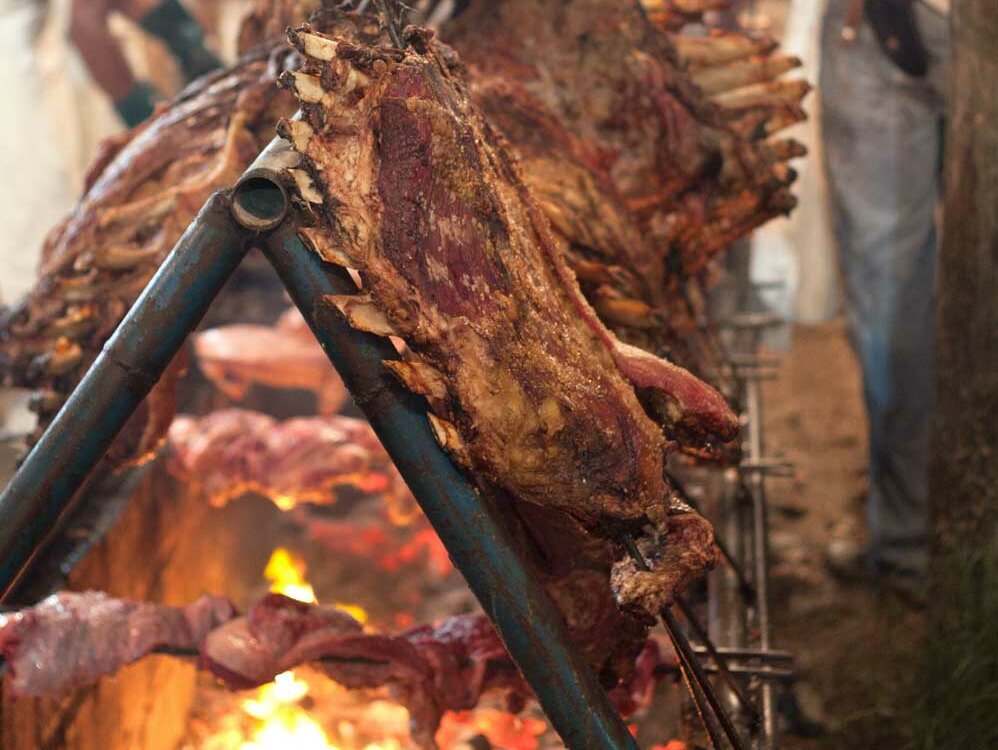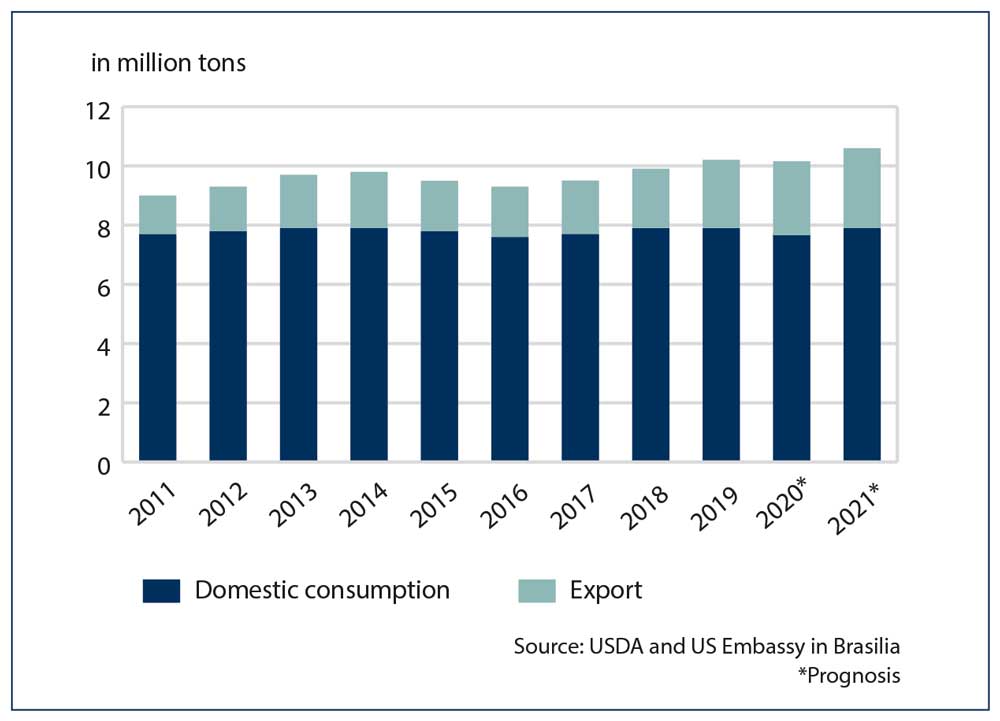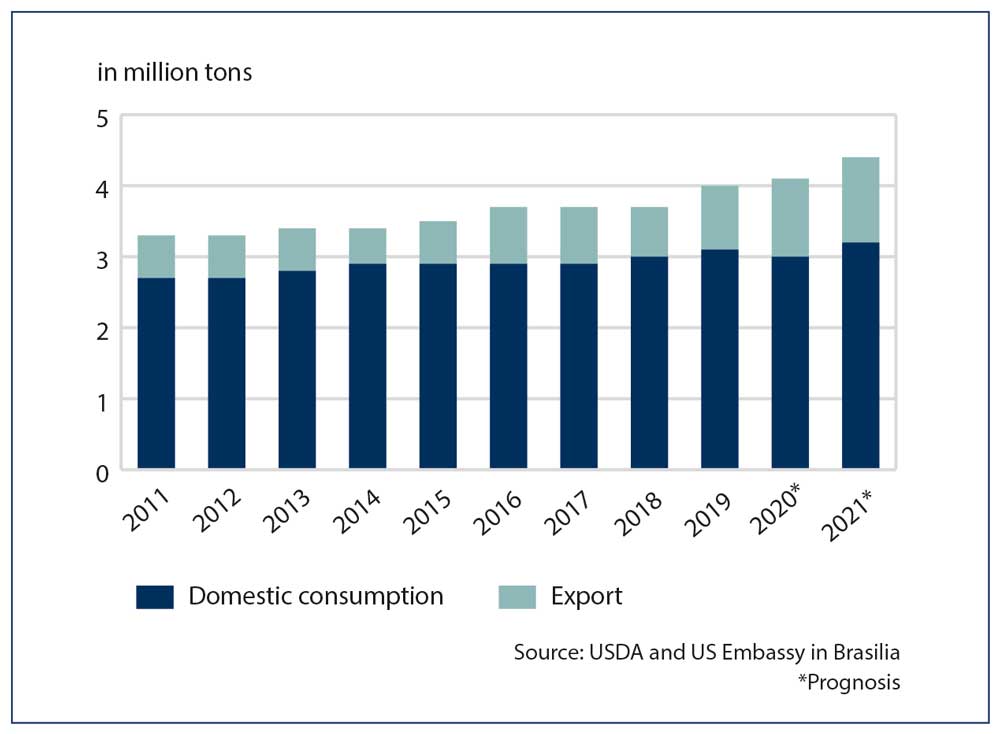Meat production: Brazil moves on the fast lane
By Markus Wolf, DLG Mitteilungen
When the world’s second-largest meat producer forecasts a plus of 15% for its pork exports, this shows plenty of confidence. It’s therefore all the more remarkable when even this high expectation is exceeded. In fact, Brazil’s success in the meat export market has long left first predictions far behind. The 2020 exports in this sector promise a growth on the year of more than one-fifth, resulting in its pig meat shipments abroad topping the million-tonne mark for the first time ever. And Brazil’s exports of beef also race from record to record with an expected 6% to 2.5 million tonnes (m t) expected for 2020. What’s more, the trend shows no sign of diminishing. So what does this mean for EU meat exports?
China behind the big boom
In a first overview of the coming calendar year, the US Embassy in Brasilia predicts notable growth for pig meat (+ 5 % to 4.3 m t) and beef production (+ 4 % to 10.5 m t) in Brazil. These growth rates lie way above the estimates for the EU and the USA. For example, the EU Commission reckons on a regressive beef production trend in Europe and only marginal expansion for pig meat.
The expected growth in Brazil is based on the following assumptions: Increasing exports (for beef and pork), mainly to China. But rising domestic consumption too, based on a prognosis that Brazil’s gross national product (GNP) will increase by 4 % in 2021, accompanied by a decrease in the country’s inflation rate.
The South American land’s export trade also profits strongly from the national currency’s weakness against the US dollar. This year alone, the Real has so far lost around 30 % in value against the US currency thus supporting the competitiveness of Brazilian products. US analysts reckon that this value loss will continue, albeit in a more moderate form, for the rest of 2020. On top of this come expectations of bumper maize and soya harvests in the new season, a bounty leading to expectations of low pig feed costs.
More meat exported
The foreseeable high foreign demand indicates that the importance of exports will continue to increase. With beef, about half the expected 400,000 t growth in production is predestined for shipment abroad. As for pig meat, the growing domestic demand (+ 120,000 t) is a much larger factor than the estimated export increase (+ 65,000 t). Expected is that around 25 % of the country’s beef production will go for export in 2021, and 27 % of all pork output. Brazil’s export balance in this sector dramatically reflects the effect of African Swine Fever (ASF) outbreaks in China. Even in the first half of 2020, tonnage of beef shipped to China (including Hongkong) was up 80 % on the same period of the previous year to 470,000 t. With this, China’s share in Brazil’s total beef exports rose to 57%. During the same period, the 41,000 t of Brazilian beef shipped to the EU (27) represented one third of all beef imports into the union.
A similar picture applies for pig meat. Here, Brazil’s exports to China/Hongkong in the first six months of 2019 totalled just under 150,000 t, with this doubling for the same period in 2020 to nearly 300,000 t. With that, Beijing is presently buying 70 % of all pig meat exports from Brazil. If the other national customers in Asia are added, Brazil’s market share in the region rises to 80 %. Out of the remaining pig meat exported by Brazil, 11 % is shipped to Latin American neighbours.
Outlook
The present signs indicate that Brazil’s beef and pork exports will continue their upward trends in the coming year and further secure the country’s position as second-largest supplier in this market after the USA. But it’s unlikely this expansion in the pig meat export business will negatively affect EU exports in this sector to third countries. As long as China has to struggle with the effects of ASF, all exporting countries should be able to profit from the high demand out of China – although now, of course, Germany is for the moment on the side lines following evidence of ASF found in wild pigs on German ground. As far as beef is concerned, EU exporters, with a market share in China of around 7 %, play only a minor role. Latest indications are that EU deliveries will hit 80,000 t and so end slightly up on the year.





